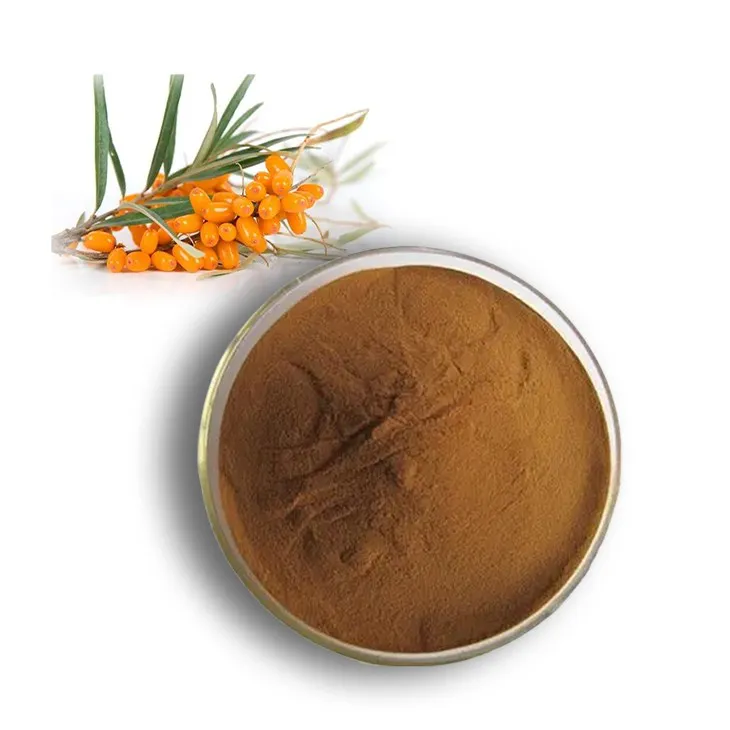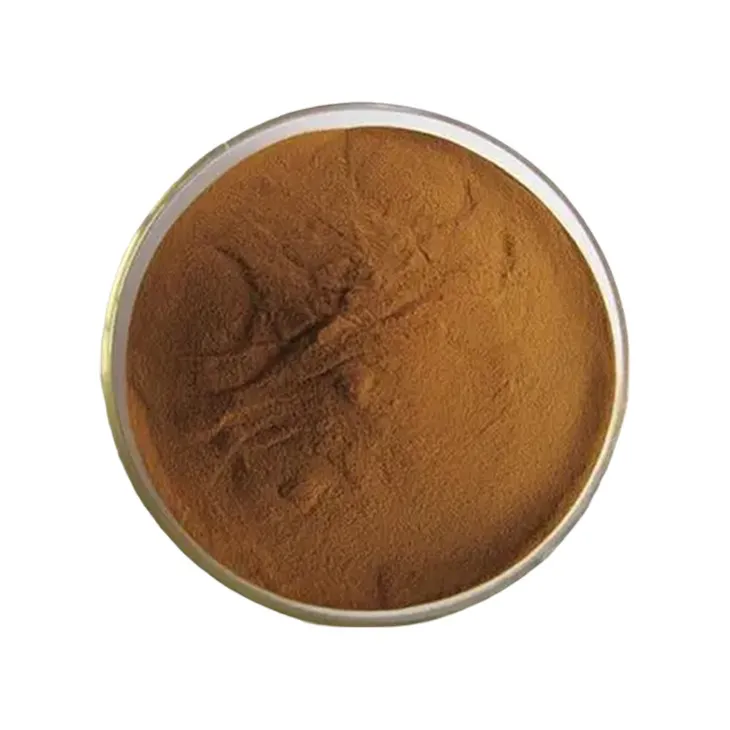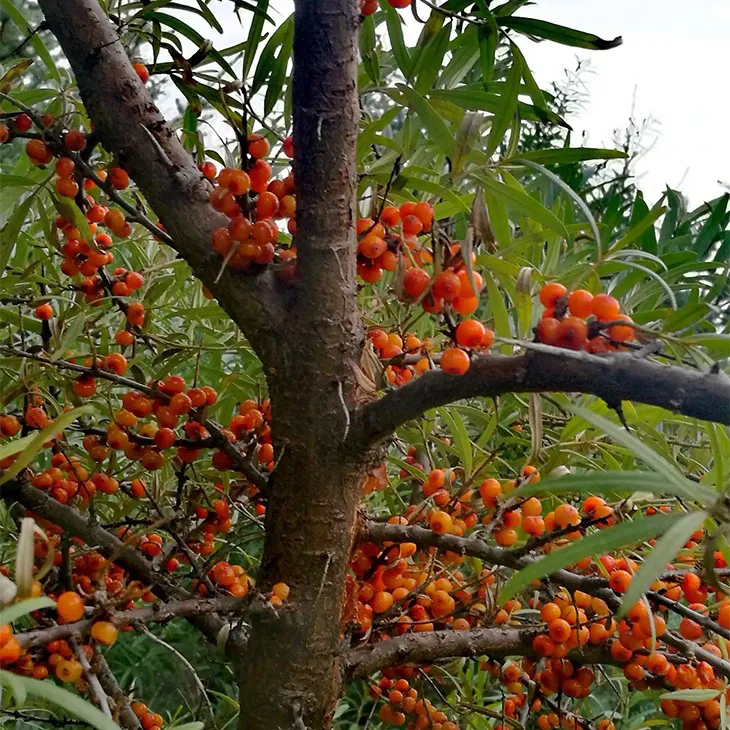- 0086-571-85302990
- sales@greenskybio.com
How to make powder from seabuckthorn bark extract?
2024-11-28

1. Introduction
Seabuckthorn (Hippophae rhamnoides) is a plant known for its various beneficial properties. The bark of seabuckthorn contains valuable compounds that can be extracted and further processed into powder form for various applications such as in the pharmaceutical, cosmetic, and food industries. This article will guide you through the process of making powder from seaBuckthorn bark extract, including extraction methods, equipment needed, and quality control aspects.

2. Extraction of Seabuckthorn Bark
2.1. Raw Material Preparation
Harvesting: Seabuckthorn bark should be harvested at the appropriate time. It is usually best to harvest during the dormant season to ensure the highest quality of the bark.
Cleaning: After harvesting, the bark needs to be thoroughly cleaned to remove any dirt, debris, or foreign matter. This can be done by washing the bark gently with water and then drying it.
2.2. Extraction Methods
Solvent Extraction:
- One common method is solvent extraction. Organic solvents such as ethanol or methanol can be used. The seabuckthorn bark is soaked in the solvent for a certain period of time. For example, it can be soaked in 70% ethanol for about 2 - 3 days at room temperature.
- The solvent helps to dissolve the active compounds in the bark. After soaking, the mixture is filtered to separate the liquid extract from the solid residue.
- Another option is water - based extraction. Boiling water can be used to extract compounds from the seabuckthorn bark. The bark is placed in boiling water and simmered for a period of time, usually around 1 - 2 hours.
- After simmering, the liquid is filtered to obtain the water - based extract. However, water - based extracts may contain more impurities compared to solvent - based extracts.

3. Equipment for Turning the Extract into Powder
3.1. Evaporation Equipment
Rotary Evaporator: If a solvent - based extraction method is used, a rotary evaporator is often required to remove the solvent. The rotary evaporator operates under reduced pressure, which allows the solvent to be evaporated at a lower temperature. This helps to preserve the integrity of the active compounds in the extract.
Vacuum Oven: For water - based extracts or to further dry the extract after solvent removal, a vacuum oven can be used. The vacuum oven can remove the remaining moisture from the extract at a relatively low temperature, preventing the degradation of the active components.
3.2. Grinding Equipment
High - speed Grinding Mill: Once the extract is dried, it needs to be ground into a powder. A high - speed grinding mill is suitable for this purpose. It can break down the dried extract into fine particles, ensuring a consistent powder texture.
Mortar and Pestle: For small - scale or laboratory - based production, a mortar and pestle can also be used to grind the dried extract. Although it is more time - consuming compared to a high - speed grinding mill, it can provide more control over the grinding process.

4. Quality Control during Production
4.1. Purity Testing
Chromatography: Chromatography techniques such as high - performance liquid chromatography (HPLC) can be used to analyze the purity of the seaBuckthorn bark extract. HPLC can separate and identify the different compounds present in the extract, ensuring that there are no unwanted contaminants or impurities.
Thin - layer Chromatography (TLC): TLC is a simpler and more cost - effective method for purity testing. It can provide a quick indication of the presence of major compounds in the extract and can also detect the presence of impurities.
4.2. Activity Testing
In - vitro Assays: In - vitro assays can be used to test the biological activity of the seaBuckthorn bark extract. For example, antioxidant assays can be carried out to determine the antioxidant capacity of the extract. This is important as the antioxidant properties of seabuckthorn bark are one of its main beneficial features.
Cell - based Assays: Cell - based assays can be used to study the effects of the extract on living cells. This can help to understand how the extract may interact with cells in the body and can provide information on its potential therapeutic effects.
4.3. Microbial Testing
Total Plate Count: Microbial testing is essential to ensure the safety of the seabuckthorn bark powder. The total plate count can be determined to assess the number of viable microorganisms present in the powder. If the count exceeds the acceptable limit, it indicates poor hygiene during production or improper storage.
Pathogen Detection: Specific pathogen detection tests should also be carried out to check for the presence of harmful bacteria, viruses, or fungi. For example, tests for Salmonella, Escherichia coli, and Aspergillus species can be performed.

5. Packaging and Storage
5.1. Packaging
Material Selection: The seabuckthorn bark powder should be packaged in appropriate materials. For example, high - quality plastic or aluminum - foil laminated bags can be used. These materials can protect the powder from moisture, light, and air, which can degrade the quality of the powder.
Sealing: The packaging should be properly sealed to prevent any leakage or ingress of air. Heat - sealing or vacuum - sealing methods can be used to ensure a tight seal.
5.2. Storage
Temperature and Humidity: The seabuckthorn bark powder should be stored in a cool, dry place. The ideal temperature for storage is around 4 - 10 °C, and the relative humidity should be kept below 60%. High temperature and humidity can cause the powder to clump or deteriorate.
Light Protection: The powder should be protected from direct sunlight. Exposure to light can cause photodegradation of the active compounds in the powder. Storing the powder in a dark place or using opaque packaging can help to prevent this.
6. Conclusion
Making powder from seabuckthorn bark extract involves several steps, from extraction of the bark to quality control and packaging. By following the proper extraction methods, using the appropriate equipment, and ensuring strict quality control, high - quality seabuckthorn bark powder can be produced. This powder can then be used in various industries, taking advantage of the beneficial properties of seabuckthorn bark.
FAQ:
What are the common extraction methods for seabuckthorn bark?
There are several common extraction methods for seabuckthorn bark. One is the solvent extraction method, where suitable solvents such as ethanol are often used to dissolve the active components in the seabuckthorn bark. Another method could be supercritical fluid extraction, which uses supercritical fluids like carbon dioxide under specific pressure and temperature conditions to extract the desired substances. Maceration is also a traditional method, in which the seabuckthorn bark is soaked in a solvent for a long time to allow the extraction of components.
What equipment is required to turn seabuckthorn bark extract into powder?
To turn seabuckthorn bark extract into powder, several types of equipment are needed. A spray dryer is commonly used, which can quickly convert the liquid extract into powder form by spraying the extract into a hot drying chamber. Freeze - drying equipment can also be used in some cases. This method first freezes the extract and then removes the water through sublimation in a vacuum environment. Additionally, a grinder may be necessary to further process the dried product into a fine powder if needed.
How can we ensure the quality of seabuckthorn bark extract powder?
Quality control of seabuckthorn bark extract powder involves multiple aspects. Firstly, the quality of the raw seabuckthorn bark should be strictly controlled, ensuring that it is free from contaminants and of the appropriate species. During the extraction process, parameters such as solvent concentration, extraction time, and temperature need to be monitored and optimized to ensure consistent extraction of active components. For the powder - making process, factors like drying temperature and time in the spray drying or freeze - drying should be adjusted properly to prevent degradation of the active substances. Regular testing for the content of active ingredients, as well as microbiological and heavy - metal tests, should also be carried out to ensure the powder meets the required quality standards.
What are the potential applications of seabuckthorn bark extract powder?
Seabuckthorn bark extract powder has several potential applications. In the pharmaceutical industry, it may be used for its potential medicinal properties, such as antioxidant, anti - inflammatory, and antimicrobial activities. In the cosmetic industry, it can be added to skincare products due to its beneficial effects on skin health, like promoting skin repair and anti - aging. It may also find applications in the food industry as a functional ingredient, potentially adding nutritional value and health - promoting properties to food products.
Are there any safety concerns when using seabuckthorn bark extract powder?
While seabuckthorn bark extract powder generally has potential health benefits, there may be some safety concerns. Allergic reactions are possible in some individuals who are sensitive to seabuckthorn or related substances. Also, if the extraction process is not properly controlled and contaminants are present in the powder, it could pose risks. Therefore, it is important to ensure that the powder is produced following strict quality control measures and that appropriate safety evaluations are carried out, especially when considering its use in pharmaceutical or food applications.
Related literature
- Studies on the Extraction and Properties of Seabuckthorn Bark Components"
- "Optimization of Seabuckthorn Bark Extract Powder Production Process"
- "Quality Evaluation of Seabuckthorn Bark Extract Powder"
- ▶ Hesperidin
- ▶ citrus bioflavonoids
- ▶ plant extract
- ▶ lycopene
- ▶ Diosmin
- ▶ Grape seed extract
- ▶ Sea buckthorn Juice Powder
- ▶ Beetroot powder
- ▶ Hops Extract
- ▶ Artichoke Extract
- ▶ Reishi mushroom extract
- ▶ Astaxanthin
- ▶ Green Tea Extract
- ▶ Curcumin Extract
- ▶ Horse Chestnut Extract
- ▶ Other Problems
- ▶ Boswellia Serrata Extract
- ▶ Resveratrol Extract
- ▶ Marigold Extract
- ▶ Grape Leaf Extract
- ▶ blog3
- ▶ blog4
-
High - quality Chasteberry Extract Products.
2024-11-28
-
China's banana juice powder suppliers.
2024-11-28
-
Bulk purchase of cranberry extract.
2024-11-28
-
How to make powder with bayberry extract?
2024-11-28
-
The best peony root extract in nature.
2024-11-28
-
100% Pure Organic Baicalin.
2024-11-28
-
Hedyotis Diffusa Extract
2024-11-28
-
Nutmeg Extract
2024-11-28
-
melatonin extract
2024-11-28
-
Lemon Juice Powder
2024-11-28
-
Epimedium extract powder
2024-11-28
-
Passionflower Extract
2024-11-28
-
Red Vine Extract
2024-11-28
-
Feverfew Extract
2024-11-28
-
Lily extract
2024-11-28
-
Kupilu Extract
2024-11-28





















